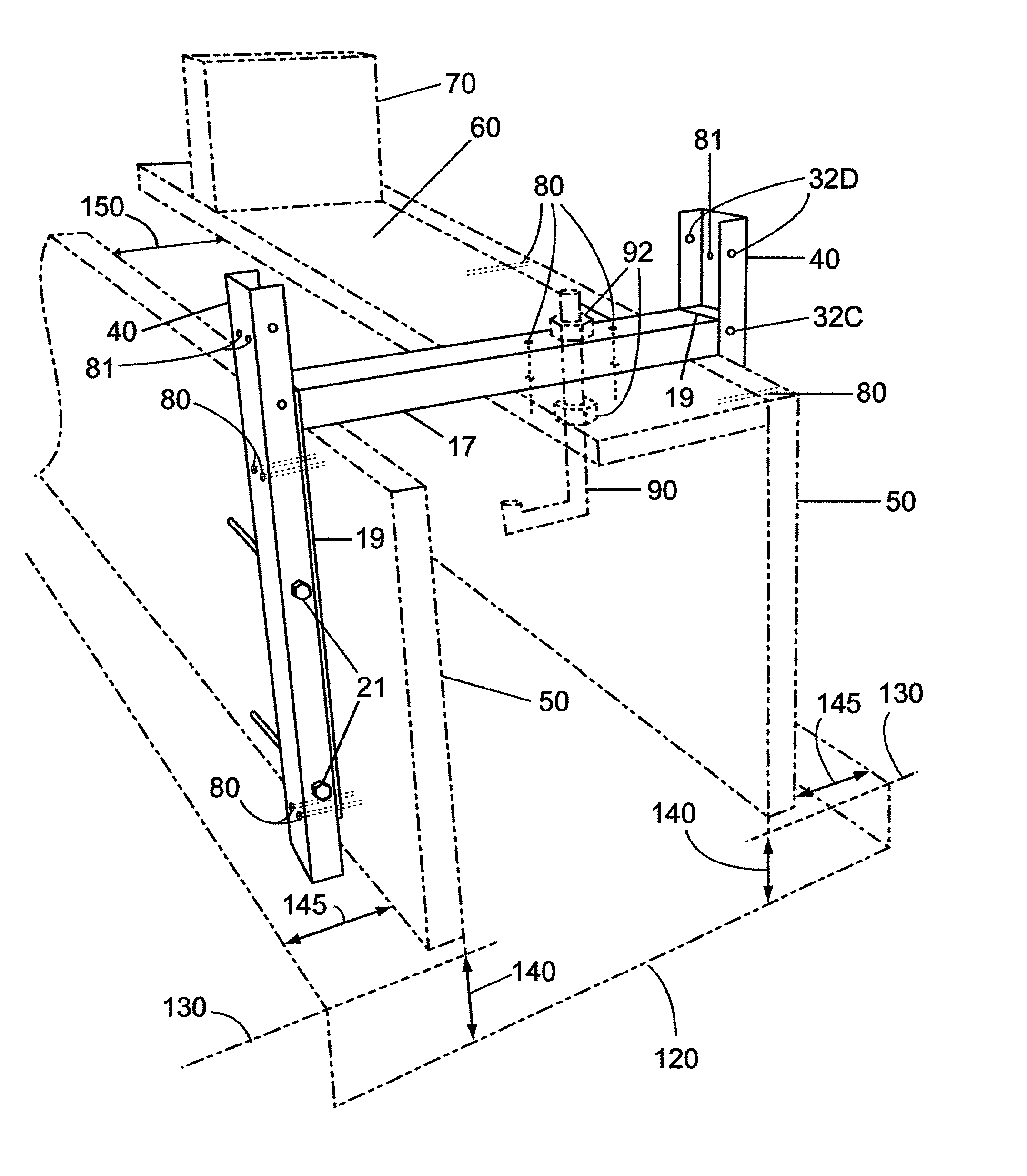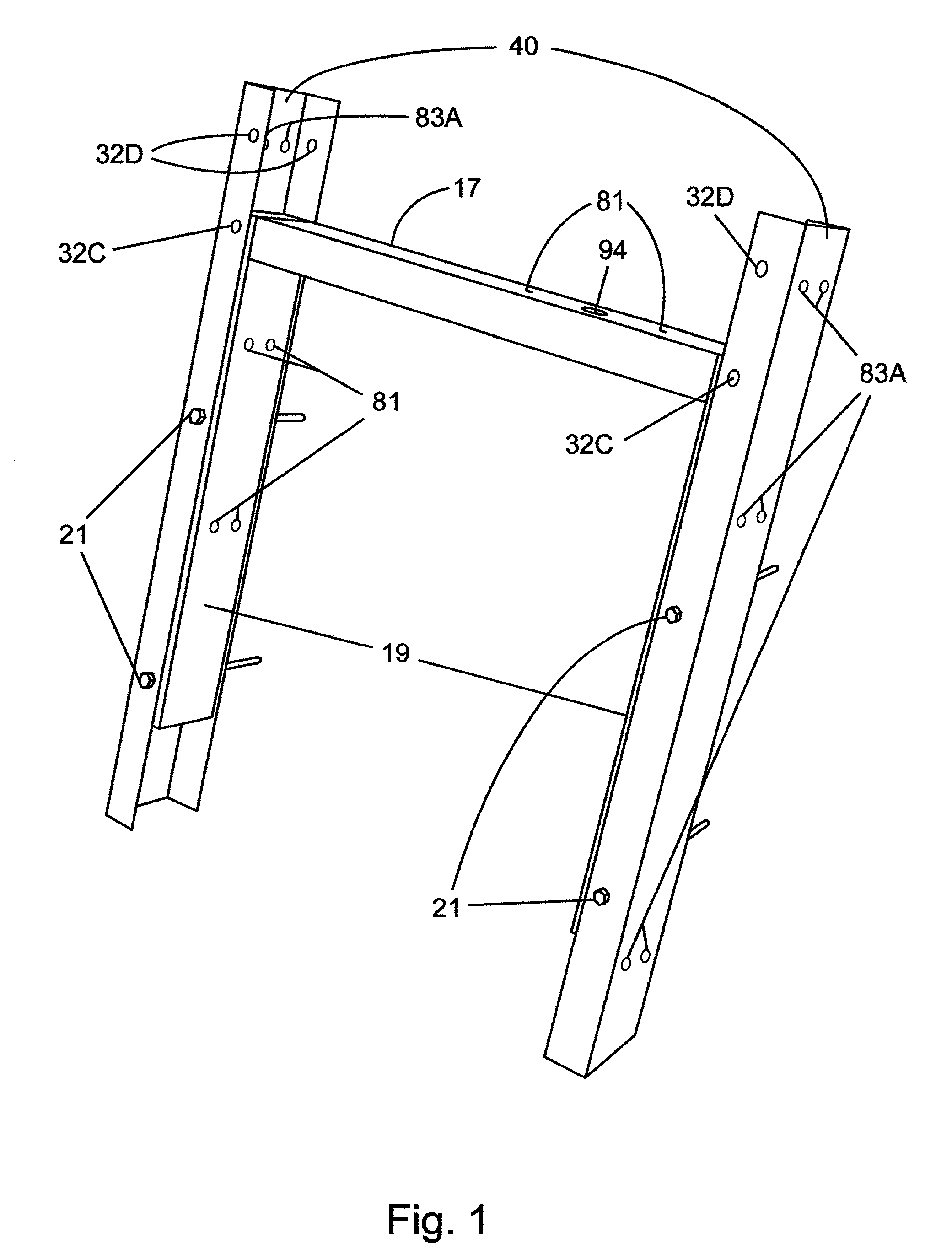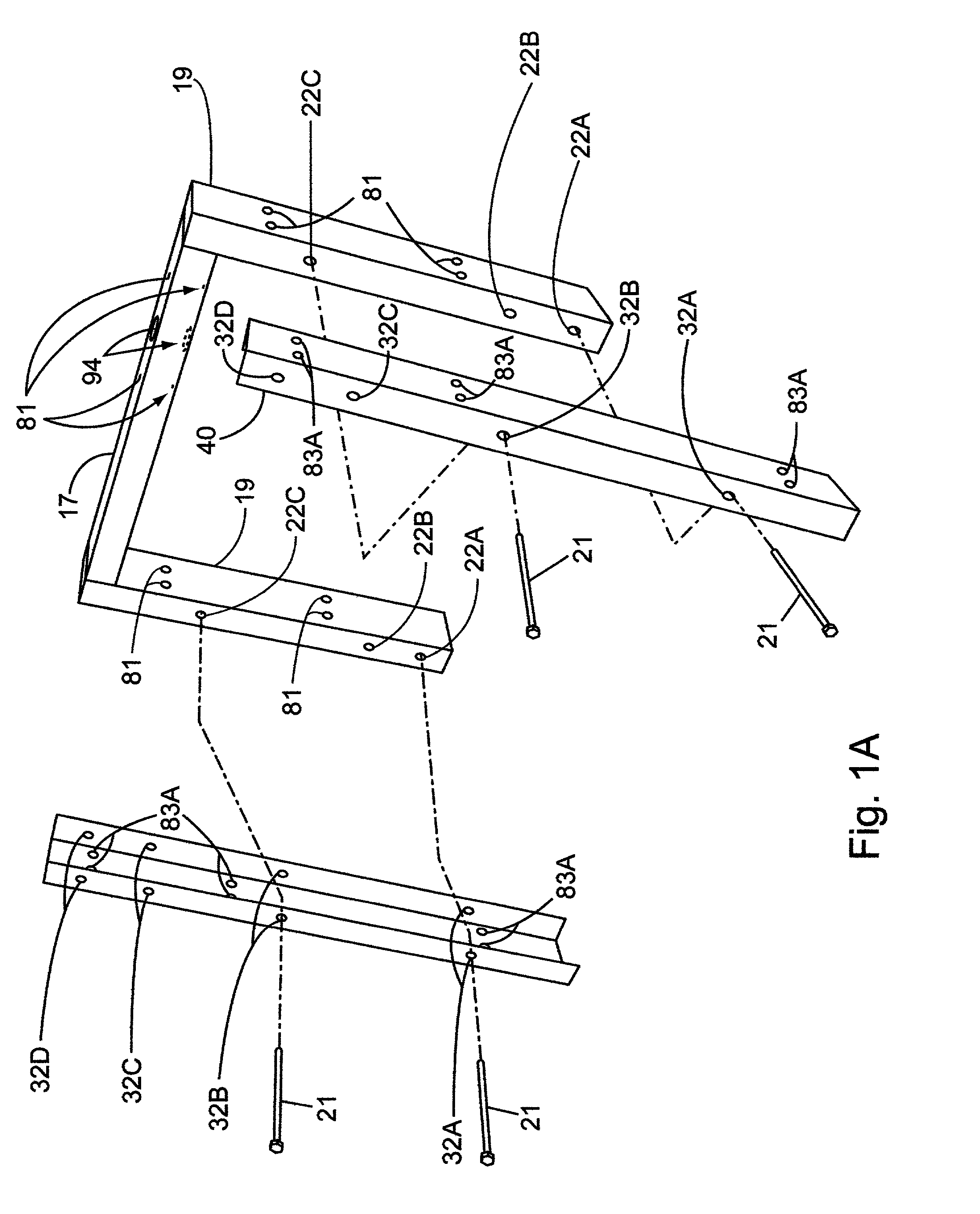Foundation from bracket and method
a technology of foundation brackets and poured concrete, which is applied in the direction of form/shutter/falseworks, building parts, building material handling, etc., can solve the problems of insufficient manpower and supporting equipment, inconvenient installation, and insufficient labor. , to achieve the effect of reducing labor intensity, reducing labor intensity, and reducing labor intensity
- Summary
- Abstract
- Description
- Claims
- Application Information
AI Technical Summary
Benefits of technology
Problems solved by technology
Method used
Image
Examples
Embodiment Construction
. 1-2
[0042] The invention consists of three parts, a main bracket FIG. 2 (perspective view), two adjustable standard side supports FIG. 3 (perspective view), and two pin bolts 21 on each side to hold the adjustable standard side supports 40 onto the main bracket FIG. 1 and FIG. 1A. FIG. 3 shows one example of a standard side support 40. Standard side supports 40 are universal and interchangeable on the main bracket FIG. 2.
[0043] Conventional tools can be used for drilling, cutting and welding steel to construct the bracket assembly. The main bracket FIG. 2 is formed from rectangular tubing steel of {fraction (1 / 8)} inch (3.275 ) thickness. Each standard side support 40 as seen in FIG. 3 is formed from {fraction (1 / 8)} inch (3.275 mm) thickness steel that fits over the rectangular tubular steel on the outer three sides. Using {fraction (1 / 8)} inch (3.275 mm) as the standard steel thickness, outside dimensions of the rectangular tubular steel measures 2 inches (50.08 mm) wide, by 1 in...
PUM
 Login to View More
Login to View More Abstract
Description
Claims
Application Information
 Login to View More
Login to View More - R&D
- Intellectual Property
- Life Sciences
- Materials
- Tech Scout
- Unparalleled Data Quality
- Higher Quality Content
- 60% Fewer Hallucinations
Browse by: Latest US Patents, China's latest patents, Technical Efficacy Thesaurus, Application Domain, Technology Topic, Popular Technical Reports.
© 2025 PatSnap. All rights reserved.Legal|Privacy policy|Modern Slavery Act Transparency Statement|Sitemap|About US| Contact US: help@patsnap.com



